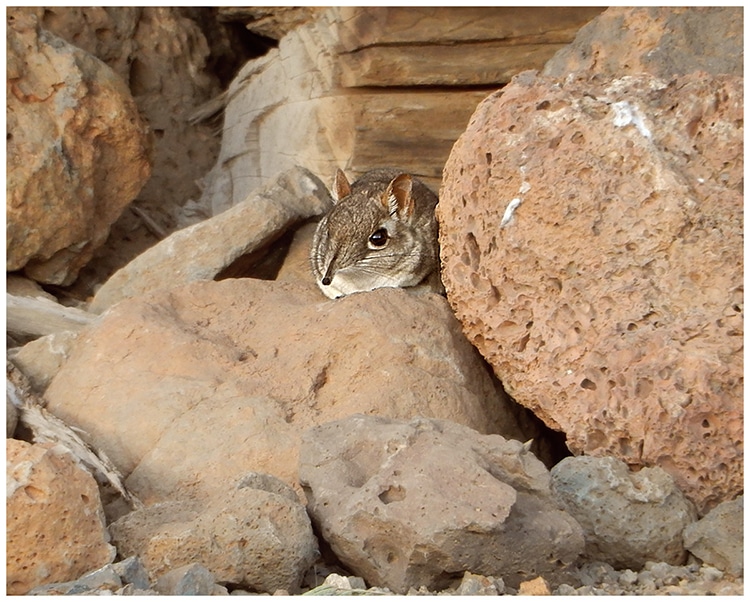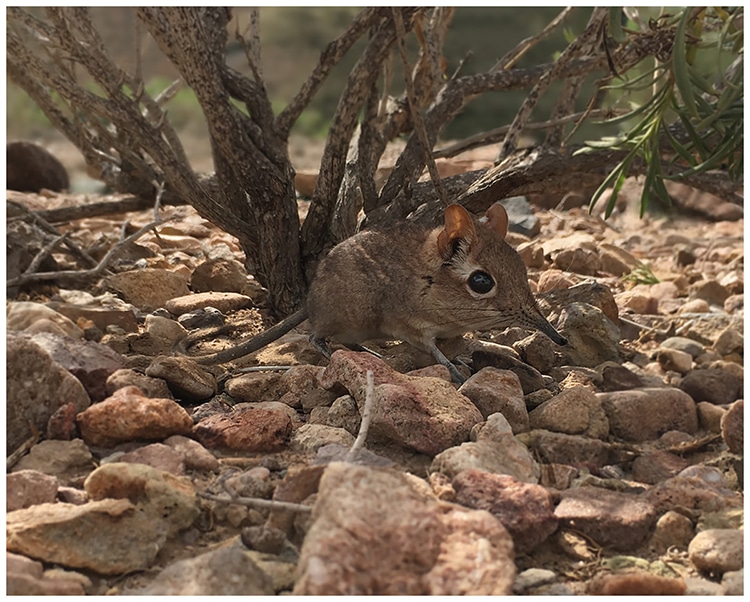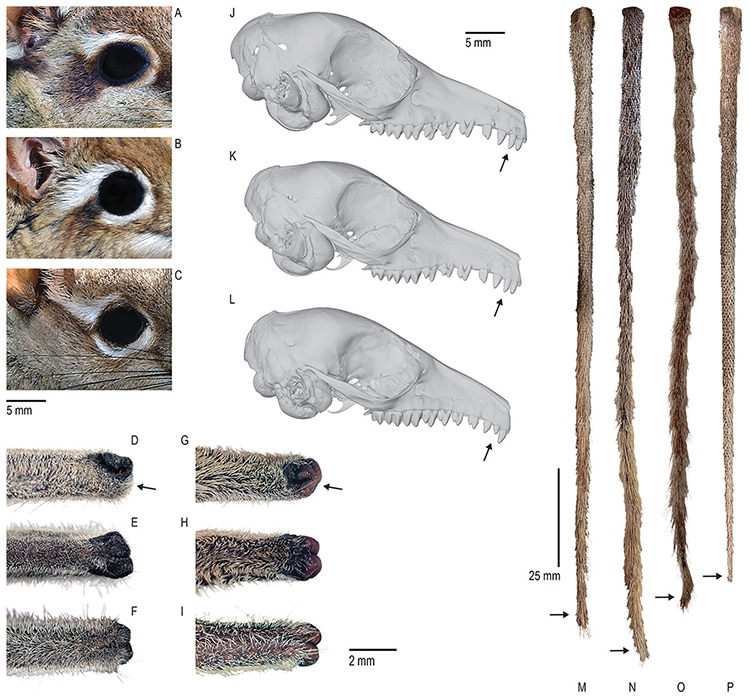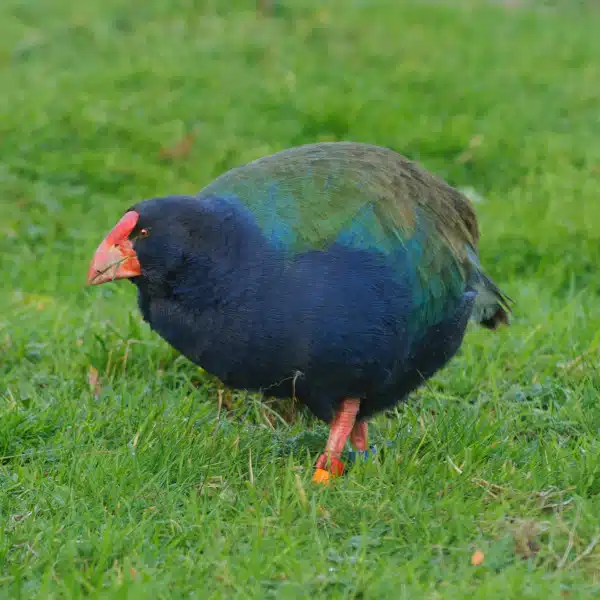
Somali Sengi suns itself in Day Forest, Djibouti. (Photo: Houssein Rayaleh/PeerJ)
Researchers have “rediscovered” an elusive species of elephant shrew (or sengi) in Djibouti. Last documented in 1968, researchers presumed that the Somali sengi was a “lost species.” However, local communities in the African nation of Djibouti have reported sightings in the rocky environment. A recently published study in the journal PeerJ documents a 2019 expedition to study sengis in Djibouti. In a happy announcement for the conservation community, researchers found the evasive species thriving and not in direct danger of habitat loss.
Led by Steven Heritage, Galen Rathbun, and Houssein Rayaleh, the team laid 1,200 traps baited with peanut butter, yeast, and oatmeal. Although sengis eat insects, the traps quickly snared a Somali sengi. The team was surprised to discover the species so far from its previously known range. Heritage told the BBC, “We did not know which species occurred in Djibouti and when we saw the diagnostic feature of a little tufted tail, we looked at each other and we knew that it was something special.”
Elephant shrews, or sengis, include 20 separate species of long-nosed mammals. Sengis are closely related to aardvarks, elephants, and manatees despite their small size. Their long legs and hunched stance allow them to reach speeds of up to 18 miles per hour. They mate monogamously and jealously guard their territory. Heritage told CNN, “In the scientific community we try to use a reserved language that would classify the animals as ‘charismatic microfauna,' which translates from science speak to normal speak as ‘adorable little animals.'”
Although the Somali sengi has been classified as “data deficient” by Global Wildlife Conservation, Heritage and his team hope to remedy this by returning to the creature's habitat to conduct further research next year. Radio tagging will help determine the range of the Somali sengi, which may stretch into Ethiopia. There is much to learn about these miniature mammals!
An elusive species of elephant shrew (or sengi) has been rediscovered in Djibouti after 50 years.

Somali Sengi among rocks at Assamo, Djibouti. (Photo: Steven Heritage/PeerJ)

The Eastern Rock Sengi (Elephant Shrew). (Photo: Stock Photos from MATTHIAS KERN/Shutterstock)
Researchers in Djibouti recognized the Somali sengi by its tufted tail, versus the sleeker tails of other species of elephant shrew.

Somali Sengi tuffted tails shown (M, N, and O) versus Rufous Sengi tail (P). (Photo: Galen Rathbun and Steven Heritage/PeerJ)
The range of the newly rediscovered elephant shrew may extend beyond Somalia and Djibouti to Ethiopia.

Potential range of Somali Sengi based on vouchered occurrence localities. (Photo: Base map from Mapswire.com (CC-BY 4.0)/PeerJ)
h/t: [BBC]
All images via PeerJ.
Related Articles:
Adorable Photos of Harvest Mice Frolicking in Tulips Will Make You Smile
Stray Puppy Found in Australia Turns Out to Be a Rare Breed of Endangered Dingo
Meet Marty Mouse, an Adorable Rodent with a Big Personality
Adorable Caracal Kittens Grow Into Elegant Wild Cats That Roam the African Savanna






















































































